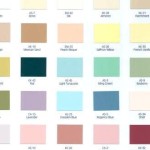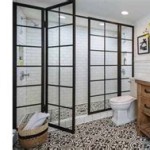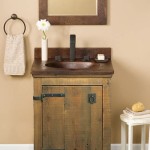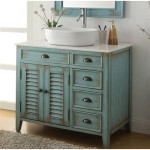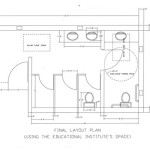Little Flies In Bathroom Sink: Identification, Causes, and Remediation
The appearance of small flies in a bathroom sink is a common household nuisance. These tiny insects, often noticed hovering near drains or congregating on walls, can quickly multiply and become a significant problem. Identifying the type of fly, understanding the conditions that attract them, and implementing effective control measures are crucial steps in eliminating these unwanted inhabitants.
The presence of these flies often indicates a deeper issue, such as stagnant water or decaying organic matter within the drain system. Addressing the underlying cause is essential to prevent recurring infestations. This article provides a comprehensive overview of the types of flies commonly found in bathroom sinks, the reasons for their presence, and the methods for their eradication.
Identifying Common Bathroom Sink Flies
Several types of small flies are frequently observed in bathrooms, each with distinct characteristics and breeding habits. Accurate identification is the first step in selecting the most appropriate treatment strategy.
Drain Flies (Psychodidae): Drain flies, also known as moth flies or filter flies, are among the most common culprits. They are small, typically measuring between 1/8 and 1/5 of an inch in length. Their defining characteristic is their fuzzy, moth-like appearance, with broad, rounded wings covered in fine hairs. Drain flies are generally dark in color, ranging from brownish-gray to nearly black.
Drain flies are weak fliers and are often seen hopping or crawling rather than flying long distances. They are attracted to stagnant water and decaying organic matter, which serves as both a breeding ground and a food source for their larvae. In bathrooms, drain flies frequently breed in the slime that accumulates inside drains, pipes, and septic tanks. This slime consists of bacteria, fungi, and decomposing organic material.
Fruit Flies (Drosophilidae): Fruit flies are another common type of small fly found in bathrooms, although they are more frequently associated with kitchens. They are significantly smaller than drain flies, usually measuring about 1/8 of an inch in length. Fruit flies are typically yellowish-brown in color and have characteristic red eyes. Their bodies are smooth and shiny, lacking the fuzzy appearance of drain flies.
Fruit flies are attracted to fermenting fruits, vegetables, and other sugary substances. They may enter bathrooms in search of these food sources, particularly if spilled sugary liquids or food scraps are present. While they are not primarily drain breeders, fruit flies can exploit moist areas, such as damp mop heads or improperly cleaned surfaces, where organic matter accumulates.
Phorid Flies (Phoridae): Phorid flies, also known as humpbacked flies or coffin flies, are less common in bathrooms than drain flies or fruit flies, but they can still be encountered. They are small, ranging in size from 1/8 to 1/4 of an inch, and are typically brown or black in color. Phorid flies are distinguished by their characteristic humpbacked appearance, resulting from a curved thorax.
Phorid flies are attracted to decaying organic matter, including sewage, carrion, and garbage. They are often found near leaky pipes, drains, and areas with accumulated moisture. In bathrooms, they can breed in drain slime or in areas where sewage is leaking. Their ability to reproduce in a wide range of decaying materials makes them a challenging pest to control.
Understanding the Causes of Fly Infestations in Bathroom Sinks
The presence of small flies in a bathroom sink almost always points to an underlying problem related to sanitation or plumbing. These insects are attracted to specific breeding conditions, and addressing these conditions is essential for eliminating the infestation.
Drain Slime and Organic Buildup: The primary cause of drain fly infestations is the accumulation of organic matter and slime within the drain system. This slime consists of bacteria, fungi, and decaying organic material, such as hair, soap scum, and food particles. The moist, nutrient-rich environment provides an ideal breeding ground for drain fly larvae.
Over time, this slime layer can build up along the walls of pipes, creating a thick, gelatinous coating that is difficult to remove. Standard flushing methods may only partially dislodge the slime, leaving behind a persistent breeding ground for drain flies. Regular cleaning and maintenance are necessary to prevent this buildup.
Leaking Pipes and Moisture Accumulation: Leaking pipes or fixtures can create persistent moisture problems in bathrooms, which can attract various types of small flies. Phorid flies, in particular, are drawn to areas with sewage leaks. Even small leaks can provide enough moisture and organic matter to support fly breeding.
Areas under sinks, behind toilets, and around shower bases are particularly vulnerable to moisture accumulation. These areas should be regularly inspected for signs of leaks or dampness. Addressing any leaks promptly is crucial to prevent fly infestations and other moisture-related problems.
Improper Ventilation: Inadequate ventilation in bathrooms can contribute to moisture buildup and the development of mold and mildew. These conditions can attract certain types of flies, such as fruit flies, which may feed on mold growth. Proper ventilation helps to reduce humidity and prevent the accumulation of moisture that supports fly breeding.
Ensuring adequate ventilation through the use of exhaust fans or open windows is essential for maintaining a dry and sanitary bathroom environment. This will help to deter flies and prevent other moisture-related problems.
Effective Remediation Strategies for Eliminating Bathroom Sink Flies
Eradicating small flies in a bathroom sink requires a multi-faceted approach that targets both the adult flies and their breeding sites. A combination of cleaning, drain treatment, and preventive measures is often necessary to achieve long-term control.
Thorough Cleaning of the Drain and Sink: The first step in eliminating drain flies is to thoroughly clean the drain and sink area. This involves removing any visible debris, such as hair and soap scum, and using a brush or pipe cleaner to scrub the inside of the drain. The goal is to dislodge as much of the organic buildup as possible.
Pouring boiling water down the drain can help to loosen and flush away some of the slime layer. However, boiling water alone is often not sufficient to completely remove the buildup. It should be used in conjunction with other cleaning methods, such as scrubbing and enzymatic drain cleaners. Avoid using harsh chemical drain cleaners, as they can damage pipes and are not always effective at removing the organic slime.
Enzymatic Drain Cleaners: Enzymatic drain cleaners are specifically designed to break down organic matter and slime within drains. These cleaners contain enzymes that digest the organic material, effectively removing the food source for drain fly larvae. Enzymatic drain cleaners are generally safe for pipes and the environment.
Follow the instructions on the product label carefully. Typically, the cleaner is poured down the drain and allowed to sit overnight to allow the enzymes to work. Regular use of enzymatic drain cleaners, such as once or twice a week, can help to prevent the buildup of organic matter and keep drain fly populations under control.
Trapping Adult Flies: While cleaning and drain treatments address the breeding sites of flies, trapping adult flies can help to reduce their numbers more quickly. Several types of traps can be used to capture adult flies in bathrooms.
Apple cider vinegar traps are a simple and effective option for trapping fruit flies and drain flies. To create a trap, pour a small amount of apple cider vinegar into a jar or cup. Add a few drops of dish soap to break the surface tension of the vinegar. Cover the jar or cup with plastic wrap and poke small holes in the plastic wrap. The flies will be attracted to the vinegar, enter the trap through the holes, and become trapped in the soapy liquid.
Sticky traps, such as flypaper or sticky strips, can also be used to capture adult flies. These traps are coated with a sticky adhesive that traps flies as they land on the surface. Place sticky traps near drains and other areas where flies are commonly seen.
Addressing Leaks and Moisture Problems: Identifying and repairing any leaks or moisture problems in the bathroom is crucial for preventing fly infestations. Check under sinks, behind toilets, and around shower bases for signs of leaks or dampness. Repair any leaky pipes or fixtures promptly.
Ensure proper ventilation in the bathroom to reduce humidity and prevent the accumulation of moisture. Use an exhaust fan during and after showers or baths, and open windows when possible to allow fresh air to circulate. Consider using a dehumidifier in bathrooms that are prone to high humidity.
Preventive Measures: Once the fly infestation has been eliminated, it is important to take preventive measures to prevent a recurrence. Regular cleaning and maintenance are essential for keeping drains clear and preventing the buildup of organic matter.
Flush drains regularly with hot water and consider using enzymatic drain cleaners on a routine basis. Clean up any spills or messes promptly to prevent attracting flies. Ensure proper ventilation in the bathroom to reduce humidity and prevent moisture buildup. By implementing these preventive measures, it is possible to maintain a fly-free bathroom environment.

5 Easy Ways To Get Rid Of Drain Flies Fast

How To Get Rid Of Drain Flies Moth And Prevent An Infestation Pest Defence

What Are Those Little Dark Colored Flies That Come Out Of My Bathroom Sink Uf Ifas Entomology And Nematology Department
Jab Plumbing Solutions Blog Blocked Drain Plumbers

How To Rid Of Drain Flies Forbes Home
How To Get Rid Of Gnats Drain Flies Fruit And Fungus
We Are Seeing Small Flies In Our Bathroom Any Idea What Could Be Causing Them To Show Up Quora

Are These Drain Flies Coming Out Of My Bathroom Drains

How To Get Rid Of Drain Flies

Fruit Flies In The Bathroom Get Rid Of Them Michael S Plumbing Orlando
Related Posts
